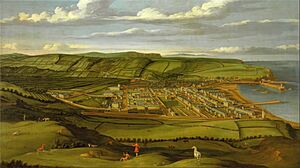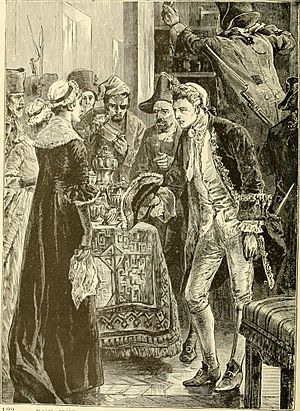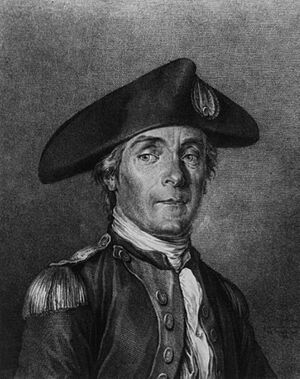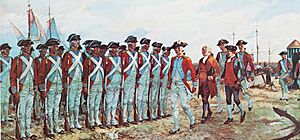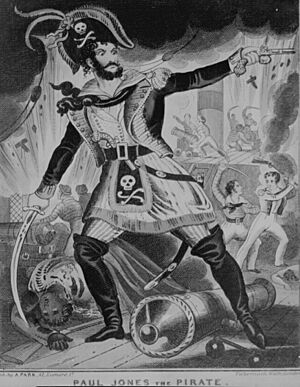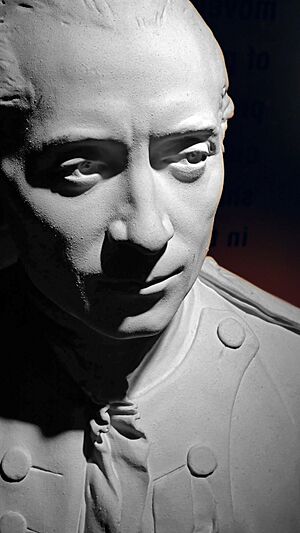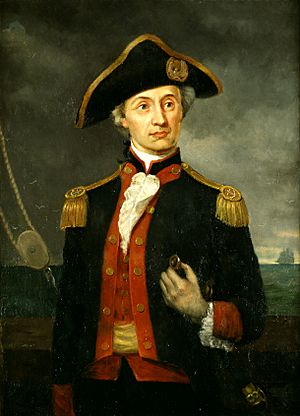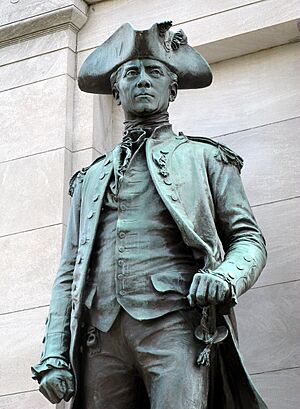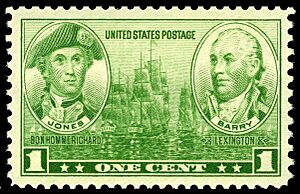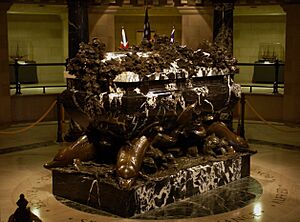John Paul Jones facts for kids
Quick facts for kids
John Paul Jones
|
|
|---|---|
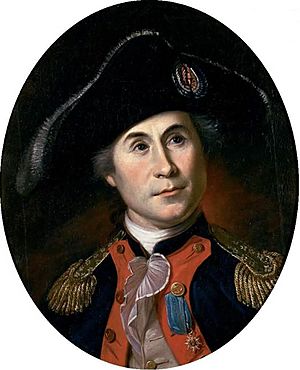
John Paul Jones depicted in a 1781 portrait by Charles Willson Peale
|
|
| Birth name | John Paul |
| Nickname(s) | Father of the American Navy |
| Born | July 6, 1747 Arbigland, Kirkcudbrightshire, Scotland, Kingdom of Great Britain |
| Died | July 18, 1792 (aged 45) Paris, Kingdom of France |
| Buried |
Naval Academy Chapel, Annapolis, Maryland, U.S.
|
| Allegiance | |
| Service/ |
|
| Years of service | 1760–1788 |
| Rank | Captain (Merchant Navy) Captain (Continental Navy) Chevalier Rear Admiral (Imperial Russian Navy) |
| Battles/wars |
|
| Awards | Institution du Mérite Militaire Congressional Gold Medal Order of Saint Anna |
| Signature | |
John Paul Jones (born John Paul; July 6, 1747 – July 18, 1792) was a brave Scottish American naval captain. He became a famous commander in the American Revolutionary War. Many people call him the "Father of the American Navy." He is known as one of the greatest naval leaders in U.S. history.
Jones was a Freemason. He made many friends among important American leaders like John Hancock and Benjamin Franklin. His actions in British waters during the American Revolutionary War made him famous around the world.
Jones was born in Scotland and started sailing at age thirteen. He commanded several merchant ships. After a difficult event with a crew member, he moved to Colony of Virginia. Around 1775, he joined the new Continental Navy to fight against Kingdom of Great Britain in the American Revolutionary War. He commanded U.S. Navy ships from France. He led attacks on British merchant ships. In 1787, he joined the Imperial Russian Navy and became a rear admiral.
Contents
Early Life and Training
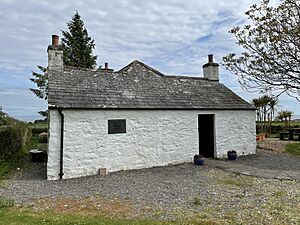
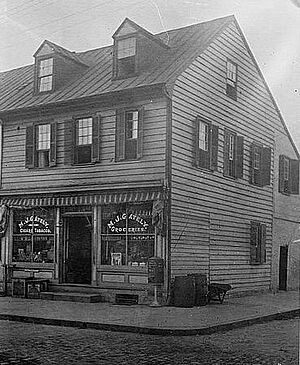
John Paul was born on the Arbigland estate in Scotland. His parents married in 1733.
John Paul began his sailing career at 13. He was an apprentice on the ship Friendship. His older brother, William Paul, lived in Fredericksburg, Virginia. Virginia was a common destination for John Paul's voyages.
For several years, Paul sailed on merchant and slave ships. He was a third mate on King George in 1764. He became a first mate on Two Friends in 1766. In 1768, he left his job in Jamaica. He found a way back to Scotland and got another job.
John Paul's career changed quickly in 1768. The captain and a mate on his ship, the John, died from yellow fever. Paul safely navigated the ship back to port. The ship's owners rewarded him by making him master of the ship. He also received ten percent of the cargo. He made two trips to the West Indies.
During his second trip in 1770, John Paul had a crew member punished. This led to accusations that he was too harsh. These claims were first dismissed. But his good reputation was damaged when the sailor died weeks later. John Paul was arrested but later released on bail. The local governor told him to leave the area and change his name.
John Paul left Scotland and commanded a ship called Betsy. He traded goods in Tobago for about 18 months. This ended when he had a dispute with a crew member. John Paul claimed he acted in self-defense. But he did not want to wait for a trial.
He felt he had to leave. There is a gap in his story for 18 months. Some people think he might have become a pirate. But these rumors might have been spread by his enemies. He later appeared in Fredericksburg, Virginia. He took care of his brother's affairs there. He was given land in Virginia. Around this time, John Paul took the last name Jones.
America became "the country of his fond election." Soon after, John Paul Jones joined the American navy. He wanted to fight against Britain.
American Colonies
Historians are not sure why Jones moved to America. It is not known if his plans for a plantation changed. Or if he was inspired by the idea of revolution. We do know he joined the American Philosophical Society in 1774.
Jones went to Philadelphia around 1775. He volunteered for the new Continental Navy. This was the start of the United States Navy. At this time, the Navy needed many good officers. Jones's skills were recognized thanks to Richard Henry Lee. With help from important members of the Continental Congress, Jones became a 1st Lieutenant. This was on the ship USS Alfred on December 7, 1775.
Revolutionary War Command
Early Command
Jones sailed from the Delaware River in February 1776. This was aboard Alfred for the Continental Navy's first voyage. On this ship, Jones had the honor of raising the first U.S. flag, the Grand Union Flag.
The fleet was supposed to sail along the coast. But Commodore Esek Hopkins ordered them to The Bahamas instead. They raided Nassau for military supplies. On their way back, they had a small fight with a British ship. Jones was then given command of the sloop USS Providence.
Congress had ordered 13 new ships for the American Navy. Jones was promised command of one of them. He accepted the smaller Providence in the meantime. In the summer of 1776, Jones did many jobs for the Navy. He moved troops, carried supplies, and protected other ships. He helped a ship from Hispaniola that was being chased by HMS Cerberus. This ship carried important military supplies. Congress bought it and named it USS Hampden. Later, on a six-week trip to Nova Scotia, Jones captured 16 prizes. He also caused damage in the Raid on Canso.
Jones's next command was to free American prisoners in Nova Scotia coal mines. He also had to attack British ships. On November 1, 1776, Jones sailed on Alfred. Bad winter weather stopped him from freeing the prisoners. But he captured the Mellish. This ship carried warm winter clothes for General John Burgoyne's troops.
Command of Ranger
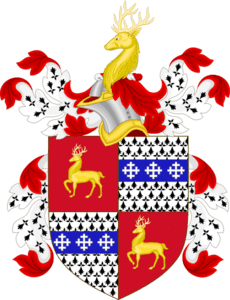
Jones had success at sea. But his disagreements with leaders grew. When he arrived in Boston in December 1776, he argued with Commodore Hopkins. Jones felt Hopkins was stopping his career. Because of this, Jones was given command of the smaller USS Ranger. This was on June 14, 1777, the same day the new Stars and Stripes flag was adopted.
Jones sailed for France on November 1, 1777. He had orders to help the American cause. American leaders in France, like Benjamin Franklin, listened to Jones's ideas. They promised him command of Indien. This was a new ship being built for America. But Britain stopped L'Indien from going to America. Jones was again without a command. During this time, Jones became good friends with Franklin.
On February 6, 1778, France signed a treaty with America. This officially recognized America's independence. Eight days later, Jones's Ranger became the first American naval ship to be officially saluted by the French. Jones wrote that this was a recognition of American independence. On April 10, Jones sailed from Brest, France, towards Great Britain.
Ranger Attacks the British
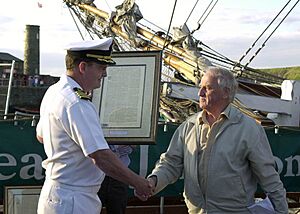
Jones had early success against British merchant ships. On April 17, 1778, he convinced his crew to attack Whitehaven. This was the town where his sailing career began. Jones later wrote that his officers cared more about money than honor. They encouraged the crew to disobey. Bad winds stopped their first attempt. Ranger sailed towards Ireland, causing more trouble for British ships.
On April 20, Jones learned that the British warship HMS Drake was near Carrickfergus, Ireland. Jones wanted to attack Drake during the day. But his sailors did not want to. So, the attack happened after midnight. The mate made a mistake, and Jones had to cut his anchor cable. The wind changed, and Ranger went back to Whitehaven for another try.
Jones led the attack with two boats and 15 men. This was just after midnight on April 23. He hoped to burn all the ships in Whitehaven's harbor. There were 200 to 400 wooden ships. They also wanted to scare the townspeople by starting more fires. The trip to shore was slow. They successfully spiked the town's large defense guns. This stopped them from being fired. But starting fires was hard because their lanterns ran out of fuel. Some men went to a public house for more fuel. They stopped for a drink, causing more delays.
Dawn was breaking when they returned and started fires. They focused on the coal ship Thompson. They hoped the flames would spread to other ships. But one crew member slipped away and warned the town. A fire alarm sounded. Many people ran to the quay. They forced the Americans to leave. The town's fire engines put out the flames. The townspeople could not sink Jones's boats because the guns were spiked.
Jones then crossed to Scotland. He hoped to capture Dunbar Douglas, 4th Earl of Selkirk. The Earl lived on St Mary's Isle. Jones wanted to exchange the Earl for American sailors forced into the Royal Navy. The Earl was not home. His wife spoke with the officers. Jones allowed his crew to take a silver plate set. This was to calm their desire to take things. Jones later bought the plate and returned it to the Earl after the war.
The attacks on St Mary's Isle and Whitehaven did not bring any profit. The crew acted like they were on a privateer (a private ship allowed to attack enemy ships). This caused problems with Jones's second-in-command, Lieutenant Thomas Simpson.
Return to Ireland
Jones led Ranger back across the Irish Sea. He hoped to attack Drake again. On April 24, the ships fought. They were about equal in power. The Americans had captured some sailors earlier. They learned that Drake had soldiers to board Ranger. Jones made sure this did not happen. He captured Drake after an hour-long gun battle. The British captain, George Burdon, was killed. Lieutenant Simpson was given command of Drake for the trip back to France.
The ships separated on the way back. This led to a conflict between Simpson and Jones. Both ships arrived safely. But Jones asked for a court-martial (a military trial) for Simpson. Simpson was later released. Jones believed his actions were important for the Revolution. Ranger's capture of Drake was a big victory for the Continental Navy. It became a symbol of American spirit. It also helped inspire the creation of the U.S. Navy.
Bonhomme Richard
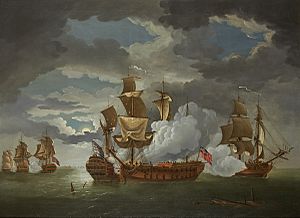
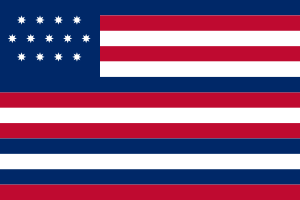
In 1779, Captain Jones took command of the 42-gun USS Bonhomme Richard. This was a merchant ship given to America by a French shipping leader. On August 14, he sailed towards Ireland with five ships. This was a distraction for a large French and Spanish invasion fleet approaching England. Jones's main problems were with his crew. Especially with Pierre Landais, captain of Alliance.
On September 23, Jones's ships met a large group of merchant ships near Flamborough Head, England. Two British warships, HMS Serapis and Countess of Scarborough, protected the merchant ships. This allowed the merchants to escape.
The Battle of Flamborough Head began after 7 p.m. Serapis fought Bonhomme Richard. Alliance fired from far away at Countess. Jones knew he could not win with just big guns. He tried to lock Richard and Serapis together. He famously said, "I have not yet begun to fight!" when asked to surrender. After about an hour, he succeeded. He began clearing the British decks with his guns and Marine sharpshooters.
Alliance sailed past and fired, hitting Richard as much as Serapis. Meanwhile, Countess of Scarborough fought Pallas. When Alliance joined, the damaged Countess surrendered.
Bonhomme Richard was burning and sinking. One officer thought the captain was dead and shouted to surrender. The British commander asked if they had struck their colors (given up). Jones later said something like, "I am determined to make you strike." But crew members heard him say, "I may sink, but I'll be damned if I strike."
The British tried to board Bonhomme Richard but failed. A grenade caused an explosion on Serapiss lower deck. Alliance returned, firing more shots. These also hit Richard but stopped Serapis from moving. Captain Pearson of Serapis realized he could not win. He surrendered. Most of Bonhomme Richards crew moved to other ships. After much effort, it was clear the ship could not be saved. Bonhomme Richard sank. Jones took command of Serapis and sailed to Texel, Holland.
The next year, King Louis XVI of France honored Jones. He gave him the title "Chevalier". Jones accepted this honor. In 1787, the Continental Congress gave him a gold medal for his "valor and brilliant services." He also received a special decoration and a sword from Louis XVI. In Britain, however, he was often called a pirate.
Jones also became a member of The Society of the Cincinnati in 1783.
Russian Service
In June 1782, Jones was supposed to command the 74-gun USS America. But Congress decided to give America to the French. So, Jones went to Europe in 1783 to collect money for his former crew. He was left without a job. On April 23, 1787, he joined the service of Empress Catherine II of Russia. She trusted Jones. He was given the name Павел де Жонес (Pavel de Zhones).
Jones wanted to remain an American citizen and officer. As a rear admiral on the ship Vladimir, he fought in the Dnieper-Bug Liman. This was an arm of the Black Sea. He fought against the Turks with the Dnieper Flotilla. Jones helped push back the Ottoman forces. But other officers were jealous of Jones. This turned the Russian commander, Prince Grigory Potemkin, against him.
Jones was called back to Saint Petersburg. He was told he would get a command in the North Sea. Other officers, especially former British naval officers, disliked Jones. They saw him as a traitor and refused to speak to him.
On June 8, 1788, Jones received the Order of Saint Anna. But he left the next month, feeling bitter. In 1789, Jones went to Warsaw, Poland. He became friends with Tadeusz Kościuszko, who had fought in the American Revolutionary War. Kościuszko told him to leave Russia. He suggested Sweden. But Catherine, who still disliked Jones, stopped him from joining the Swedish or Danish navies.
Later Life
In May 1790, Jones arrived in Paris. He was still a Russian Rear Admiral and received a pension. This allowed him to live in retirement for two years. But he could not find a place in Paris society. He tried to rejoin the Russian Navy several times. However, Catherine did not reply to his letters. She said his service was not special and Russian sailors refused to serve under him.
His memoirs were published in Edinburgh. Inspired by them, James Fenimore Cooper and Alexandre Dumas wrote adventure novels. Cooper's 1824 novel The Pilot tells fictional stories of Jones's sea adventures. Dumas' Captain Paul (1846) was a follow-up.
Death and Reburial
In June 1792, Jones was appointed U.S. Consul. His job was to help free American captives in Algiers. But before he could do this, he died in his Paris apartment on July 18, 1792. He was 45 years old. He died from a kidney disease. A small group of friends and servants walked his body for burial. He was buried in Paris at the Saint Louis Cemetery.
Jones's grave was unmarked or the marker was lost. By 1899, Americans started looking for his coffin. But the record of his burial plot was also lost. His personal papers were passed around. In 1824, a customer found them in a New York bakery and bought them.
Exhumation and Reburial
In 1905, Jones's remains were found by U.S. Ambassador to France General Horace Porter. He had searched for six years. After Jones's death, a Frenchman had paid to preserve his body. It was kept in alcohol in a lead coffin. This was in case the United States wanted to claim his body. Porter knew what to look for.
With an old map of Paris, Porter's team found the old cemetery. They used probes to find lead coffins. Five coffins were dug up. The third one, found on April 7, 1905, was quickly recognized as Jones. Doctors confirmed it was him. His face was compared to an old sculpture.
Jones's body was brought to the United States on the USS Brooklyn (CA-3). Three other ships escorted it. Seven U.S. Navy battleships joined the procession near the American coast. On April 24, 1906, Jones's coffin was placed in Bancroft Hall at the U.S. Naval Academy in Annapolis, Maryland. President Theodore Roosevelt gave a speech honoring Jones. On January 26, 1913, Jones's remains were finally placed in a bronze and marble sarcophagus at the Naval Academy Chapel.
Posthumous Pardon at Whitehaven
In 1999, Jones received an honorary pardon from the port of Whitehaven. This was for his raid on the town. Lieutenant Steve Lyons from the U.S. Navy and the Russian Ambassador were present. The U.S. Navy also received the Freedom of the Port of Whitehaven. This was the only time this honor has been given in the port's 400-year history. This pardon was part of a Maritime Festival.
See Also
- Bibliography of early American naval history
- Commodore John Hazelwood, a commander in the Continental Navy
- John Paul Jones Cottage Museum, Jones's birthplace in Scotland
- John Paul Jones House, his home in New Hampshire
- USS Paul Jones (1862), a steam gunboat
- USS Paul Jones (DD-10), a Bainbridge-class destroyer
- USS Paul Jones (DD-230), a Clemson-class destroyer
- USS John Paul Jones (DD-932), a Forrest Sherman-class destroyer
- USS John Paul Jones (DDG-53), an Arleigh Burke-class destroyer in active service
 In Spanish: John Paul Jones (militar) para niños
In Spanish: John Paul Jones (militar) para niños


